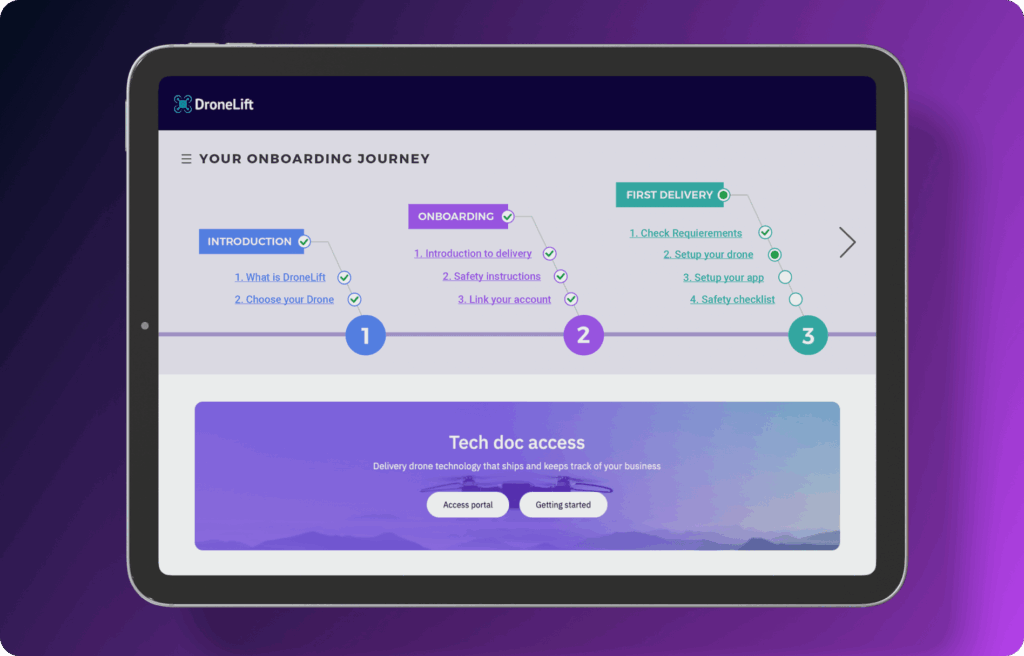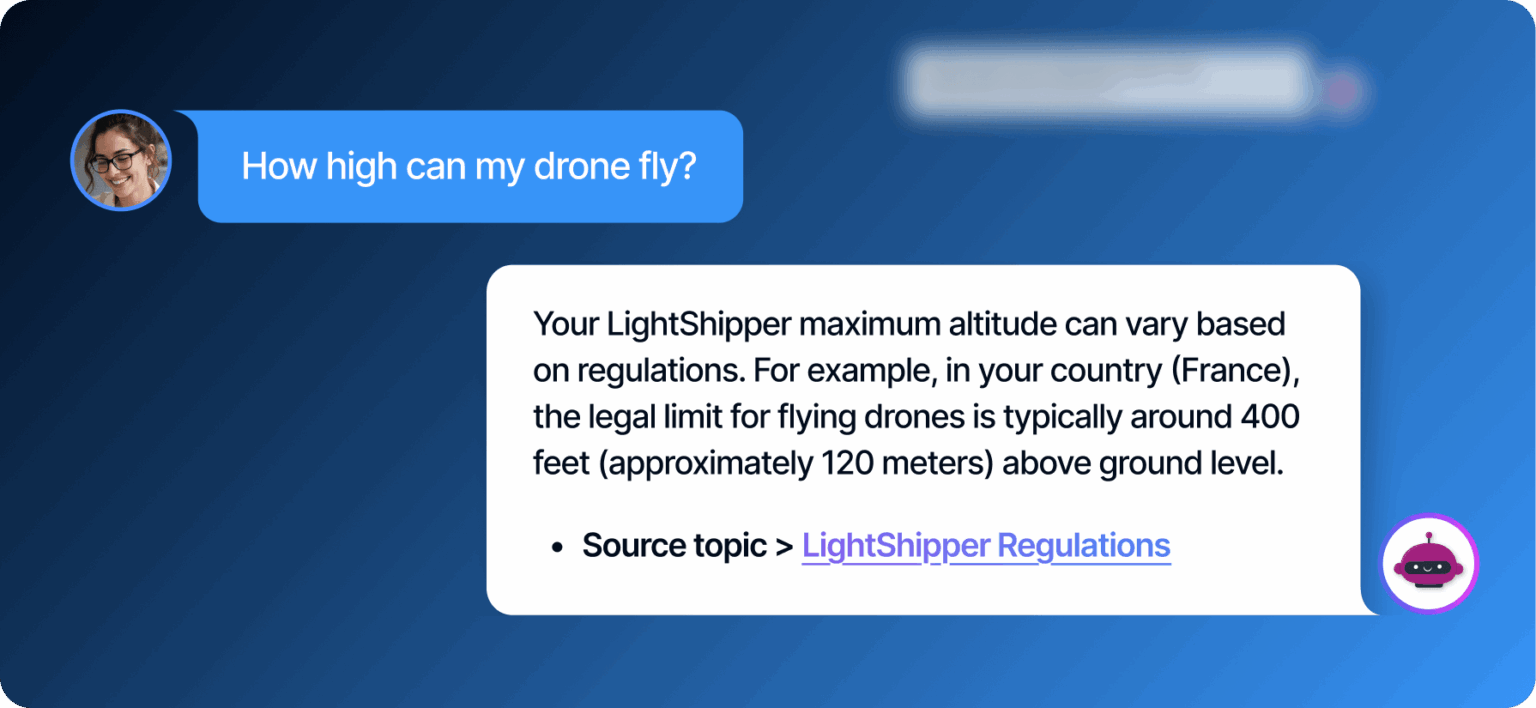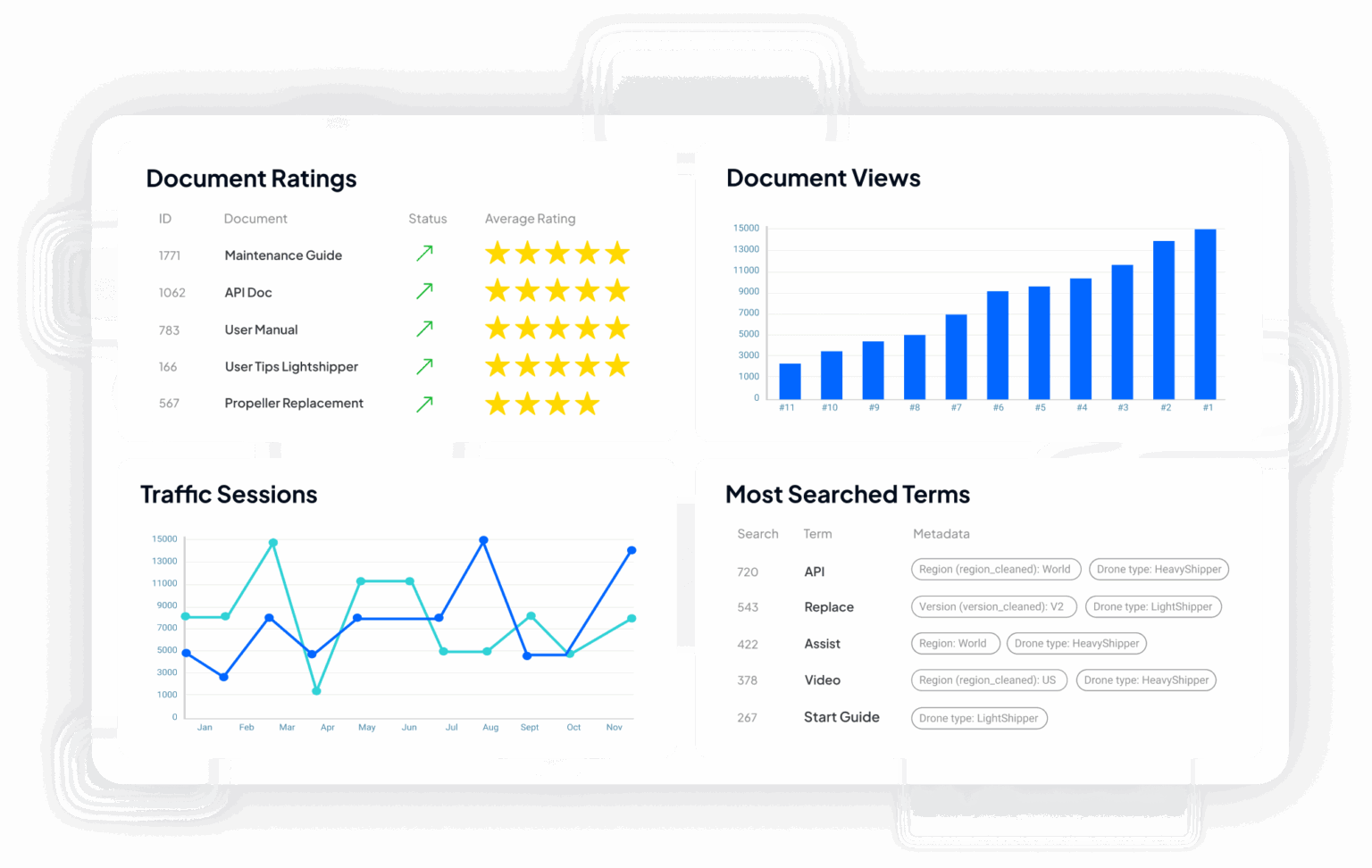
Self Service Customer Support: 7 Practices to Improve Your Strategy
Boost customer support with self-service. Learn benefits, 7 essential best practices, and implementation tips for knowledge bases, AI, FAQs, and more.

Table of Contents
- What is Self-Service Customer Support?
- Why Self-Service Wins for You and Your Customers
- Increased Customer Satisfaction
- Reduced Support Costs
- Improved Support Scalability
- Streamlined Onboarding Process
- Optimized Customer Journey Insights
- Self-Service Customer Support Implementation Guide
- 1. Centralize Content
- 2. Build a Customer Portal
- 3. Add an AI-Powered Chatbot
- Understanding the Implementation Timeline
- 7 Practices to Improve Self-Service Customer Support
- Make Every Self-Service Search a Victory
- Keep Content Fresh for Better Satisfaction
- Design Interfaces Your Customers Love
- Prioritize the 88% of Mobile-first Users
- Turn AI Into Your 24/7 Support Superhero
- Turn Support Tickets into Self-Service Successes
- Use Customer Data to Plan Your Content Roadmap
- Conclusion
It’s time to set the record straight. While businesses believe that 60% of their customers want self-service options, the reality is that 81% of users want to self-serve. Despite this demand, only 15% of users are satisfied with self-service customer support options. To help you keep up with growing customer expectations, we’ve outlined everything you need to know about setting up, optimizing, and modernizing your self-service customer support tools.
What is Self-Service Customer Support?
Customer self-service is a type of support where customers solve their problems on their own without the help of a support agent. Documentation portals and knowledge bases provide the necessary tools and resources to help customers engage in self-service and avoid support tickets. These digital hubs contain self-service content, such as technical documentation, knowledge base articles, FAQs, installation guides, product manuals, and more.
Why Self-Service Wins for You and Your Customers
Implementing self-service customer support options can provide significant advantages for companies. Here are five key benefits:
- Increased customer satisfaction
- Reduced support costs
- Improved support scalability
- Streamlined onboarding process
- Optimized customer journey insights
Let’s look at each one in detail.
Increased Customer Satisfaction
Self-service empowers customers to independently search for and access solutions to their problems, significantly reducing the time it takes to resolve their issues. This immediate access to information eliminates the need for waiting on hold or navigating through various support channels, which often leads to frustration.
Reduced Support Costs
Want to cut your support expenses down to a fraction of the cost? Self-service customer support lets users help themselves without needing a live support agent. Therefore, each successful self-service operation means more savings, with results that scale alongside you. Plus, with 65% of support teams reporting fewer calls after investing in self-service, support reps have more time to respond to complex issues.

Improved Support Scalability
As your business expands, an increase in customers usually equals more support headaches. Self-service reverses this. While your support team sleeps soundly, your self-service tools provide 24/7 answers to user questions around the world in any language. Your company can scale without making your support team suffer. On the contrary, they get to focus on the complex tickets that need a personal, human touch.
Streamlined Onboarding Process
Providing a smooth and user-friendly onboarding process is one of the first interactions customers have with your company. Companies that offer seamless access to product knowledge foster autonomy and boost product adoption. Digital self-service onboarding supplements manual onboarding by providing all training materials, tools, and content in a central, easily accessible location. A flexible, personalized experience is key as 55% of people return items or cancel licenses when they don’t understand how to use the product. With self-service, you create product experts, not frustrated detractors.

Optimized Customer Journey Insights
Self-service tools give you an insider’s look at how effective your documentation is. Dedicated content analytics are the key to unlocking these insights. Each customer interaction — from clicks to searches and feedback that “this didn’t help” — tells you exactly what your customers need, so you can update your documentation accordingly. Notice documents that are read frequently? Add shortcut links to them on your portal homepage. Find user search terms that yield no results? It’s time to fill those content gaps with new and updated documentation. These insights enable you to refine, enhance, and align your documentation to customer expectations. Continuous improvements lead to a better user experience and help put a stop to potential frustrations before they escalate.
Self-Service Customer Support Implementation Guide
To take advantage of these benefits, you simply need to start. Launching new self-service support tools is easier with these three pre-requisite steps.
1. Centralize Content
Product knowledge is often scattered, spread across various systems, formats, and repositories. This fragmentation makes it challenging for businesses to deliver that content effectively. In fact, 97% of buyers said it would be somewhat or very helpful to have all of their buying research and resources in one place.
To deliver effective self-service, the first step is to consolidate your information and resources into a centralized repository. With everything unified in one location, it becomes easier to offer targeted, personalized content across all your channels. This approach ensures that users can quickly find what they need to troubleshoot issues, learn about products, alleviate frustrations, and minimize their reliance on live support.
2. Build a Customer Portal
One of the critical elements of successful self-service is customer portals. Self-service portals empower users to control how they engage with a business and its documentation: search for helpful content, check the latest product updates, interact with knowledge documents, and submit support requests. With this in place, your easy-to-access content serves as a tool to prevent and deflect unnecessary support tickets.

3. Add an AI-Powered Chatbot
With your content centralized and a customer portal in place, you can then integrate a chatbot enabled with retrieval-augmented generation (RAG) to deliver relevant information across use cases. RAG turns chatbots into internal experts, like a custom ChatGPT for your company’s product knowledge. Leveraging semantic search as the foundation for your AI conversational layer, the chatbot responds with accurate answers in natural language. The result is immediate: real-time, context-aware assistance packaged as a fluid, personalized conversation.
The chatbot provides up-to-date answers based on your content with links to relevant material to back them up. Users can ask questions and check documentation without interruption, leading to a seamless troubleshooting experience.
Companies can integrate AI chatbots into any product or application, like a knowledge base, doc portal, or directly into a product interface.

Understanding the Implementation Timeline
So, you want to implement self-service customer support? Let’s consider the project timeline. Without Fluid Topics, centralizing content, building a portal, and adding AI will take extensive time and resources — we’re talking years — without guaranteed success.
- Connecting scattered domain knowledge to a centralized hub is highly complex. Yet, without addressing content silos, users won’t be able to find the product information they need.
- Portals need to connect to all content sources and handle a variety of content formats. Plus, teams need to customize the portal’s branding and design for a positive user experience.
- AI solutions are highly complex to integrate into existing ecosystems. Companies need to address extensive security and infrastructure requirements before launching new AI projects.
Don’t waste time trying to build an in-house solution while your competitors get ahead. With Fluid Topics, your self-service experiences will be up and running in no time. Our out-of-the-box solution is easily customizable and seamlessly integrates with existing systems so you can access the benefits, enhance the user experience, and improve ROI faster.
7 Practices to Improve Self-Service Customer Support
There are plenty of ways to optimize how your customers support themselves. We’ve gathered the top seven practices to put in place.
Make Every Self-Service Search a Victory
To optimize the ease with which customers find relevant content in a self-service platform, it’s essential to employ advanced tools such as a semantic-based search engine and RAG. A semantic search engine goes beyond simple keyword matching by understanding the context and intent behind user queries, delivering more precise and relevant results. This technology ensures that users are directed to the most useful content, even if their search terms are ambiguous or varied. Complementing these technologies with a robust metadata strategy ensures that content is accurately tagged and categorized, making it easier for the search engine to index and retrieve relevant information.
Keep Content Fresh for Better Satisfaction
Your self-service content is only useful if it’s up to date to provide the answers that users need today. Inaccurate or outdated information will create customer confusion and frustration. This issue is widespread, too. A whopping 88% of employees reported regularly finding out-of-date or irrelevant product information, with 44% finding ‘significantly’ out-of-date documentation. While employees may know what’s accurate or not, users will take your documentation as the truth. Create a framework to perform regular content freshness checks and make sure any changes are reflected across self-service systems.
Design Interfaces Your Customers Love
Companies must design an intuitive user interface for a smooth self-service experience. There are various ways to customize and design different knowledge bases or documentation portal solutions. Some require a higher level of technical intervention, while others, like Fluid Topics, offer an intuitive WYSIWYG editor allowing companies to customize their portal branding and features. From page creation to interface design, local adaptivity, AI capabilities, and more, it’s important to consider how you want to build your user experience when choosing self-service solutions.

Prioritize the 88% of Mobile-first Users
Your customers deserve easy content access, no matter the device they’re on. 88% of users expect mobile-responsive self-service options from companies. This is particularly true for field service and maintenance engineers who need rapid access to content on mobile phones or tablets to limit downtime and meet SLAs. You must make sure your self-service is consistent across documentation formats (text, 2D, 3D, multimedia, etc.) and devices (laptop, tablet, smartphone, AR-VR goggles,). If you achieve that, you’ll provide an efficient, reliable, and intuitive customer experience.
Turn AI Into Your 24/7 Support Superhero
It wouldn’t be a competitive list of best practices without mentioning how AI should play a role in your self-service options (in addition to RAG chatbots!).
New Search Abilities: AI innovations are expanding the ways users find answers and information. Applications in voice and visual search are already becoming more available and accurate. With computer vision, customers can use machine part images to search for the right product manual version rather than using text.
Content Experience: Create new AI-enabled ways for users to interact with content and troubleshoot their issues faster. Offer options to summarize documentation, explain complex sections of code, and extract key information like tools needed for a specific engineering procedure. All of these will increase user engagement and enhance self-service.
Recommendation Systems: With AI Machine Learning, your search engine studies customer patterns and behavior to optimize and personalize content recommendations for their profile, role, and needs.
Turn Support Tickets into Self-Service Successes
Ticket deflection, or case deflection, refers to reducing the number of support tickets by helping customers solve problems on their own through self-service channels. Case deflection aims to provide accessible, relevant content so users don’t need to reach out to a company’s support representatives. Facilitate ticket deflection from your help desk by using advanced search capabilities to proactively suggest content related to the user’s problem. By offering personalized and relevant suggestions, users are guided to the documentation needed to solve issues on their own. The user then confirms whether the recommendation was useful. If yes, then a ticket is avoided. As a result, ticket deflection enhances agent productivity, lowers support costs, and increases both agent and customer satisfaction.
We saw the impact almost immediately. In the first month after launching the self-service technical documentation portal we saw a drop in the number of service tickets of 34%! The adoption by our partners, resellers, and users of the self-service portal was rapid, and technicians were eager to have access to an alternative to a phone-centered help desk.
Johannes Müller
Technical Communication Leader at swissQprint
Use Customer Data to Plan Your Content Roadmap
To optimize your self-service, you must monitor the efficiency of your content and engage in regular content updates to improve your customer support. No, we’re not talking about Google Analytics-style metrics for marketing operations. You need dedicated content data that provides insights into how efficient your documentation is at helping customers self-serve. What kind of metrics are useful for this?
- Searches with no results
- Most and least read topics
- User ratings per topic
- Average time spent reading a section

Analyze this data to determine how your technical writers can continue to optimize content for self-service customer support. The more useful the content, the better customers will be able to solve their problems on their own, boosting ticket deflection.
Conclusion
The truth is simple: customers want to self-serve. With benefits like increased customer satisfaction, improved support scalability, reduced support costs, and a streamlined onboarding process, it’s clear why self-service is the future of customer support. Use our best practices to get started, and if you have additional questions or needs, let Fluid Topics support and develop your self-service offers.
Editor’s Note: This post was originally published in September 2024. It has been completely edited and updated for accuracy and comprehensiveness.
Schedule a free demo of Fluid Topics with a product expert
Self-service Customer Support FAQs
Self-service customer support reduces costs in several ways by shifting simple and repetitive support tasks from live agents to automated tools. One method is ticket deflection, where when users begin to submit a support request, intelligent systems like AI-powered chatbots or knowledge base suggestions can surface relevant articles or solutions in real-time. This often resolves the issue before a ticket is created, significantly lowering the volume of incoming support cases. Since resolving issues through self-service channels costs dramatically less than using live agents (approximately $0.10 vs. $6–$12 per interaction), the savings add up quickly. It also offers additional business benefits with long-term, scalable cost improvements:
- Operational costs: Support teams need fewer phone lines and less call center infrastructure, companies can reduce the number of support agent licenses, and there are fewer overhead costs per resolved case.
- Staff efficiencies: Support agents can focus on higher value tasks, solving complex issues and automating simple, repetitive responses. Self-service also lowers training costs for new agents to become autonomous.



